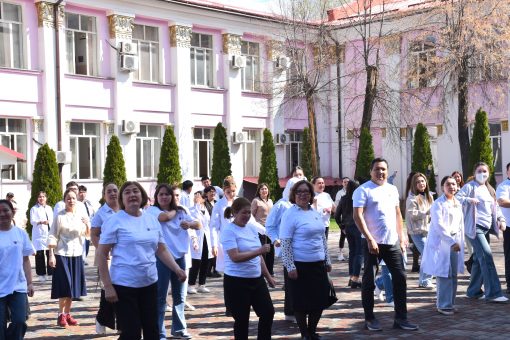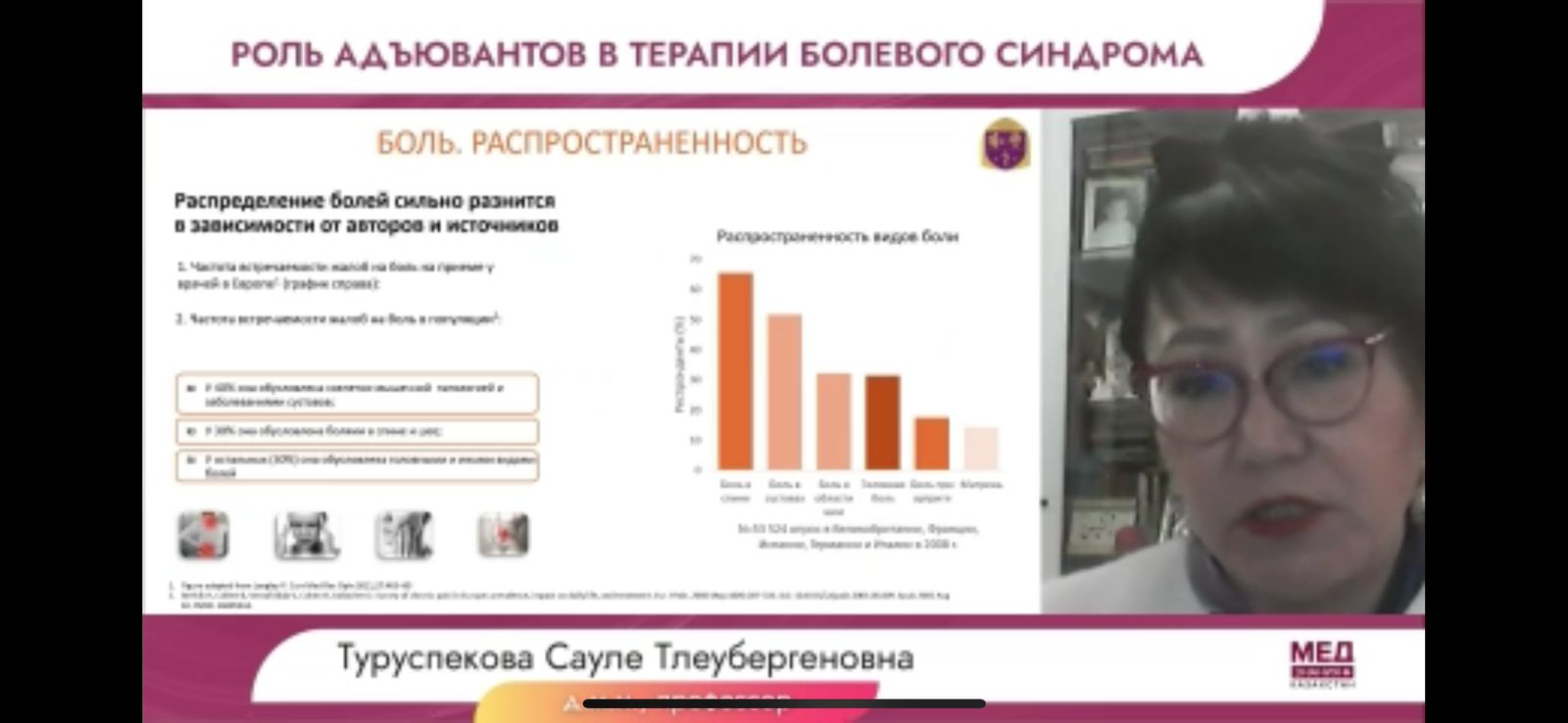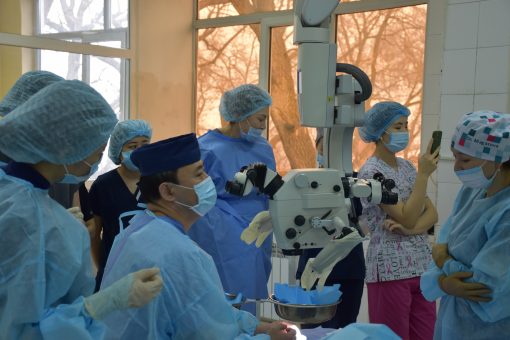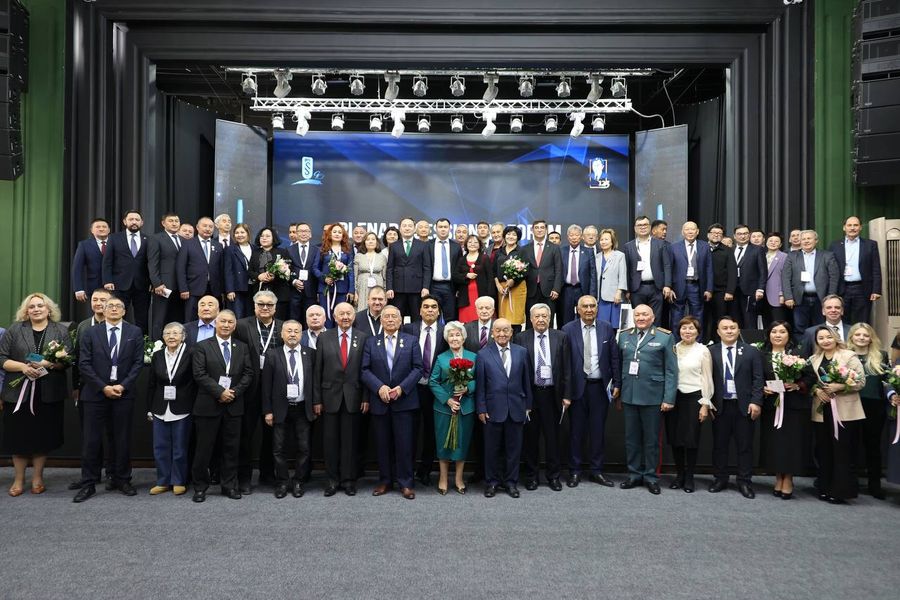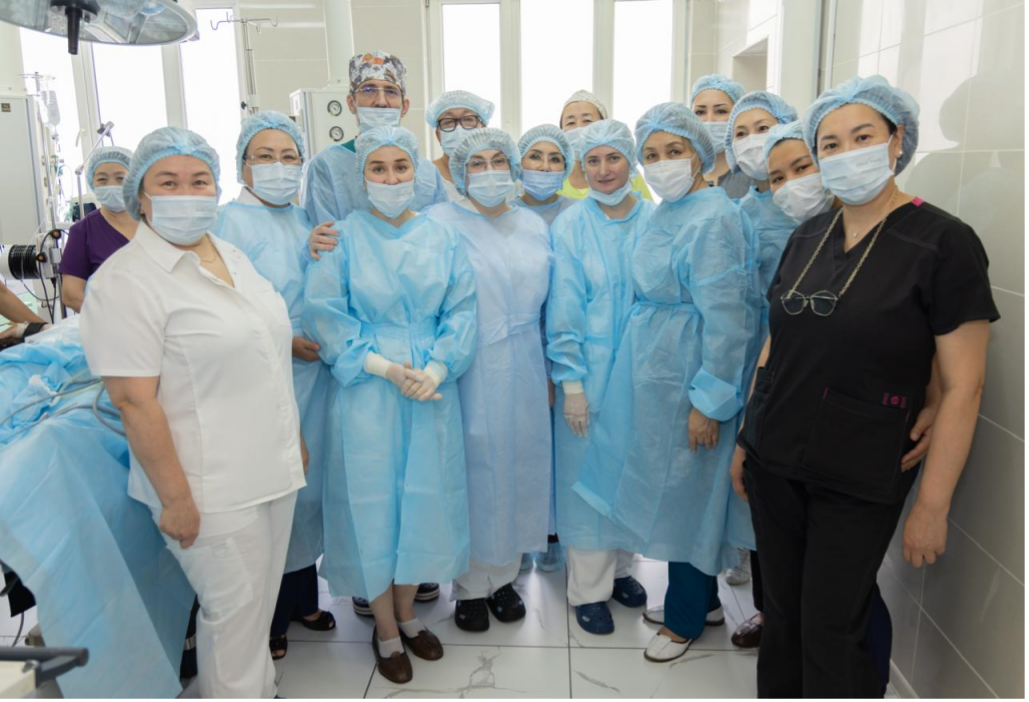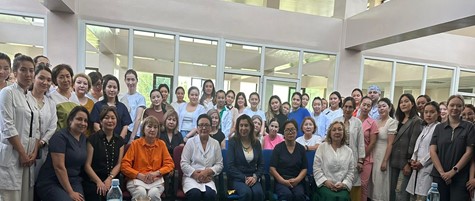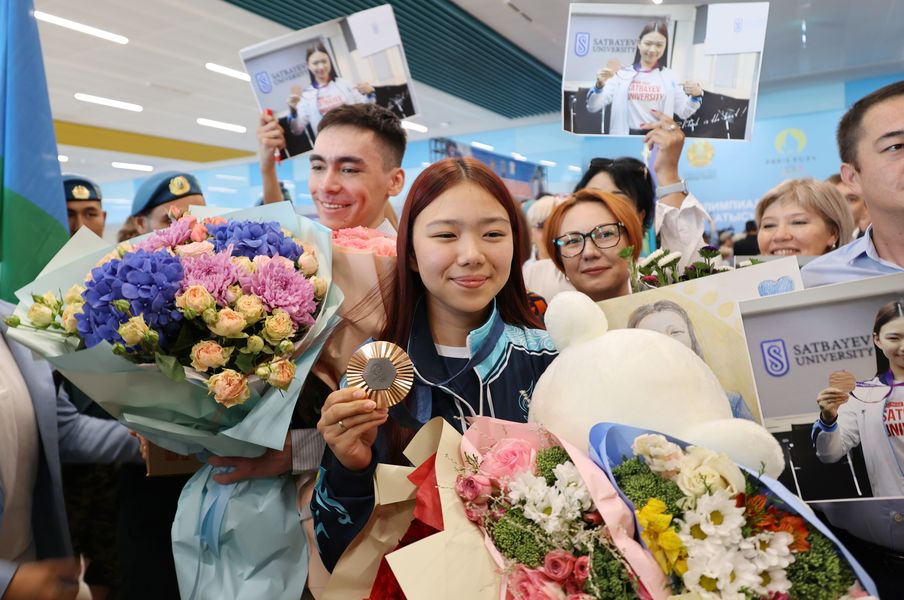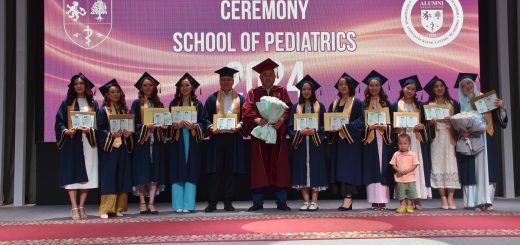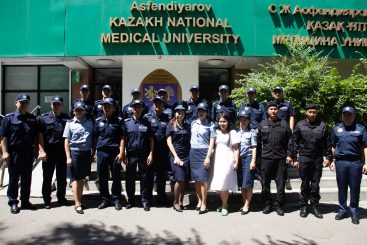On April 7, 2025, in celebration of World Health Day, the S.D. Asfendiyarov Kazakh National Medical University (KazNMU) once again demonstrated its role as a national leader in promoting a culture of wellness and active living. In a vibrant and uplifting series of events, the university brought together students, faculty, and healthcare professionals in a shared commitment to health — not only as a field of study, but as a lived, everyday practice.
From the early hours of the morning, Karagaily Park and the square in front of the Rector’s Office were filled with energy, music, and movement. Participants of all ages and roles within the university community — from enthusiastic students to professors and staff — came together in a dynamic flashmob-style morning workout. This lively gathering created a powerful atmosphere of unity, motivation, and vitality. With every synchronized stretch and coordinated movement, the event sent a strong message: that health is born in motion, that energy arises from community, and that wellness is a habit, not a coincidence.
The initiative didn’t stop in the central locations. Across all university clinics, healthcare professionals stepped out of their usual settings and into open public spaces to participate in morning workouts of their own. Dressed in scrubs, lab coats, and sportswear, they proved by example that even those who care for others must care for themselves first. These outdoor activities weren’t just symbolic — they were sincere efforts to model a lifestyle that prioritizes health as a conscious, daily choice. By doing so, they reminded the public that medical professionals are not only caregivers but also role models in the ongoing pursuit of wellness.
At KazNMU, the message is clear: health is not just something we talk about — it’s something we embody. Sport is more than just physical movement; it is a path toward resilience, clarity, and sustainability, both personally and professionally. This understanding is deeply rooted in the university’s philosophy, where education and healthy living go hand in hand. The World Health Day celebration served not only as an opportunity to raise awareness but also as an invitation to make movement a meaningful and lasting part of everyday life.
This day also served as a reminder that, in a world increasingly dominated by screens and sedentary routines, the simple act of moving our bodies together can be revolutionary. It is a way of reclaiming energy, reconnecting with ourselves, and reinforcing a shared commitment to a better, healthier future. Each participant, through their presence and effort, contributed to something greater — a collective spirit that transcends a single day or event.
KazNMU extends its sincere gratitude to everyone who joined this initiative, who inspired others by showing up, and who proved that change begins with small, consistent actions. The hope is that this celebration will spark a new tradition — one that replaces passivity with purpose, and routine with ritual. Let this morning’s workout be more than a memory; let it be the beginning of a movement — one that continues to grow with each step, stretch, and smile.
Today, KazNMU didn’t just host an event. It set a rhythm. A rhythm of responsibility, of unity, of proactive care for the body and mind. The university reminded everyone that health is not seasonal or situational — it is the foundation of everything else we strive for. Through shared movement and mutual support, KazNMU painted a vivid picture of what a healthy nation can look like — one step, one heartbeat, one community at a time.
As World Health Day comes to a close, what remains is the uplifting energy of participation, the joy of movement, and the shared hope that this momentum will carry forward into every day that follows. May this event be remembered not only as a celebration but as a call — a personal victory over inertia, and a collective step toward a future where health is lived, not just learned.




